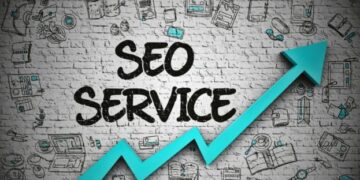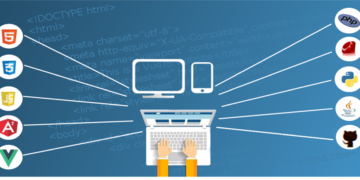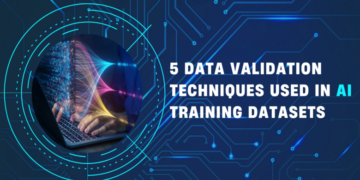Imagine a world where data silos crumble, collaboration thrives, and insights gleaned from your most valuable assets – your customer data – unlock explosive growth. Sounds like a marketer’s dream, right? Well, for the 60% of enterprises already leveraging data clean rooms, it’s become a reality.
But first – what is a data clean room?
A data clean room is a secure, collaborative environment where multiple companies or departments within a company can share and analyze data without revealing individual customer information.
In this blog, we will help you understand how it’s helping businesses to improve their ROI. Additionally, read on to learn some tips on how to choose the right data clean room to maintain the efficiency of your business.
How does using a data clean room help to improve ROI for your business?
- Hyper-targeted advertising
Data clean rooms enable the secure matching of first-party data sets across different companies. This allows you to build highly targeted audience segments based on shared demographics, purchase history, and online behavior. This granular level of insight translates to ad campaigns that resonate deeply with your audience, driving higher click-through rates, conversions, and ultimately, ROI.
- Enhanced customer understanding
Data silos often leave you with a fragmented view of your customers. Data clean rooms bridge this gap by facilitating secure data collaboration with complementary partners, like retailers or loyalty programs. By combining your data with theirs, you gain a 360-degree view of your customer journey, revealing hidden insights into purchase patterns, preferences, and churn triggers. This empowers you to personalize experiences, offer relevant recommendations, and build lasting customer loyalty. This ultimately leads to a higher lifetime value and increased revenue.
- Precise market research and product development
By collaborating with research institutions or industry players, you can access vast datasets beyond your reach. This enriched data pool enables you to conduct accurate market research, identify emerging trends, and understand your target audience’s needs and pain points. This translates into data-driven product development, ensuring new offerings resonate with your customer base and maximize your market share.
- Optimized fraud detection and risk management
Data clean rooms can be powerful weapons in the fight against fraud. By combining your transaction data with that of other companies in your industry, you can identify patterns and anomalies that might signify fraudulent activity. This collaborative approach allows for faster detection and mitigation of fraud, minimizing financial losses and protecting your brand reputation.
- Secure data monetization
Data clean rooms offer a secure platform for monetizing your valuable first-party data without compromising privacy. By collaborating with data marketplaces or research institutions, you can grant controlled access to your anonymized data sets for a fee. This opens up a new revenue stream while ensuring your data remains secure and user privacy is protected.
How to choose the right data clean room for your business?
With a growing number of providers and diverse features, selecting the right data-clean room for your specific needs can feel overwhelming. Here are a few tips for choosing the right data clean room.
1. Know your purpose well
- What goals do you hope to achieve? Is it improved marketing targeting, deeper audience insights, or fraud prevention? Defining your priorities will shape your search.
2. Assess your data landscape
- What type of data do you own? Customer purchase history, website behavior, or loyalty program details? Understanding your data composition helps match it with compatible data clean rooms.
3. Prioritize security and privacy
- How sensitive is your data? Opt for providers with robust security protocols, including multi-factor authentication and data encryption. Look for certifications like SOC 2 or ISO 27001 for added assurance.
4. Consider flexibility and scalability
- Can the data clean room handle your data volume and future growth? Look for options that can scale seamlessly as your data needs evolve. Flexibility in data integration and collaboration features is also crucial.
5. Focus on user experience
- Is the interface intuitive and user-friendly? Will your team be able to navigate the platform efficiently? Ease of use fosters collaboration and maximizes ROI.
6. Evaluate pricing and support
- Does the pricing model align with your budget and usage patterns? Choose a provider with transparent pricing and supportive customer service to ensure smooth onboarding and ongoing management.
7. Explore partner compatibility
- Will the data clean room integrate well with your existing data platforms and tools? Seamless integration saves time and resources, promoting a more efficient workflow.
8. Look for additional capabilities
- Does the data clean room offer advanced features beyond basic data sharing? Look for options like data modeling, machine learning, and insights generation to maximize value extraction.
Don’t be afraid to try before you invest. Many third-party data clean room providers offer free trials or demos, allowing you to test the platform and ensure it aligns with your expectations.
Bonus Tip: Clean your data before sharing it.
Remember, irrespective of the data clean room you choose, the data you share needs to be cleansed, verified, and validated. Dirty data not only obscures valuable insights but also jeopardizes trust and compliance. Hence, to ensure data hygiene, you need to
- Eliminate errors: Fix spelling mistakes, formatting inconsistencies, and missing values.
- Consolidate entries: Streamline data by removing redundancies.
- Ensure compatibility: Guarantee seamless integration and analysis across datasets.
- Filter out noise: Remove noise to reveal meaningful patterns and trends.
To achieve this, consider either assembling a dedicated team of data experts or partnering with a reputable data cleansing service provider. By prioritizing data cleansing, you can confidently share accurate and reliable data with stakeholders.

Adoption of data clean rooms: Challenges and its future
While data clean rooms offer a secure haven for data collaboration, their widespread adoption remains slow. Costly setups, complex integration, and lingering privacy concerns deter many. Standardized protocols are elusive, and tech giants’ walled gardens offer alternative, albeit siloed, solutions. Unfamiliarity with clean rooms’ benefits further impedes progress. Integrating them into existing tech stacks can be a technical challenge, and the ever-shifting regulatory landscape adds uncertainty.
Despite these hurdles, the promise of secure, collaborative data analysis is undeniable. As technology advances, costs reduce, and standards emerge, data clean rooms are poised to unlock their true potential, revolutionizing how businesses leverage data in the privacy-focused future.
Also visit: start a business
Author Bio:

Gracie Ben is a data analyst currently working at DataEntryIndia.in, a leading company providing data entry & mining services & other data-related solutions. For more than ten years, she has actively contributed to the growth of many enterprises & businesses (startups, SMEs, and big companies) by guiding them to utilize their data assets. Having a keen interest in data science, Gracie keeps herself up-to-date on all the latest data trends and technologies shaping the industry and transforming businesses. She has written over 1600 articles and informative blogs so far covering various topics, including data entry, data management, data mining, web research, and more.



































